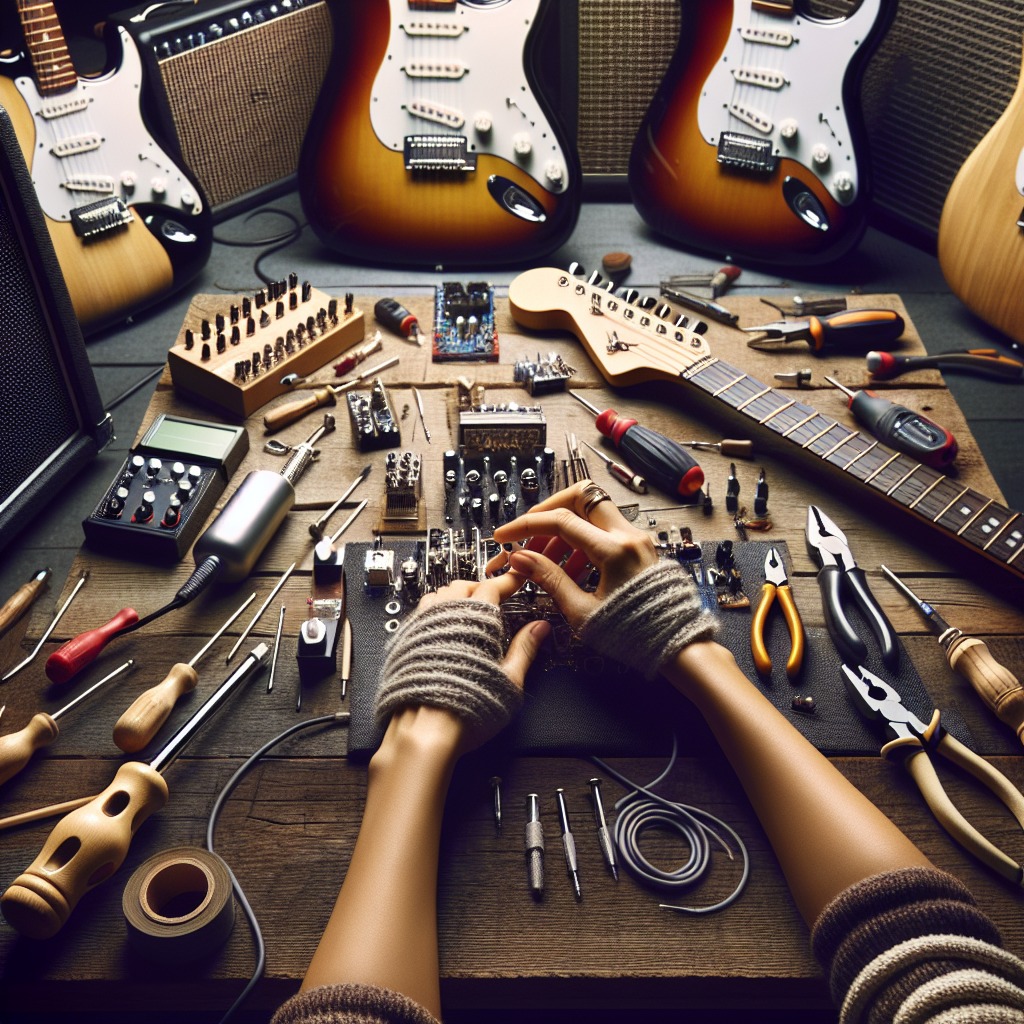
How to Choose the Right Amp for Your Guitar Setup: 7 Essential Tips
Choosing the right amplifier is a crucial step in crafting your perfect guitar tone. With a plethora of options available in the market, from tube amps to digital modeling amps, it’s easy to feel overwhelmed. Whether you are a beginner guitarist or looking to upgrade your setup, this guide will walk you through everything you need to know about selecting the right amp for your guitar.
1. Understand the Types of Guitar Amps
Before you dive into the specifics, it’s important to understand the different types of guitar amplifiers available:
- Tube Amps: Known for their warm, rich tones, tube amps are a favorite among musicians for their excellent distortion and sound quality. However, they are typically more expensive and require more maintenance.
- Solid-State Amps: Generally more affordable, these amps use transistor technology, making them durable and reliable. They often have a clean sound, which may not be as warm as tube amps.
- Modeling Amps: Equipped with digital processors, these amps can emulate a variety of amp tones and effects. They’re flexible and a great choice for players who want a versatile setup.
- Hybrid Amps: These amps combine the technologies of tube and solid-state amps, often featuring a tube preamp stage and a solid-state power section, offering a balance between sound quality and price.
2. Consider the Wattage
The wattage of an amp is crucial as it affects the loudness and headroom of the sound. Here’s what you need to know:
- Lower Watt Amps (1-20 watts): Ideal for home practice, recording, or small gigs. These amps allow for natural distortion at lower volumes.
- Mid-Range Watt Amps (20-50 watts): Suitable for larger rooms and rehearsals. They provide good headroom and can handle various styles.
- High Watt Amps (50+ watts): Best for large venues or outdoor performances. They offer plenty of headroom and are less likely to distort at high volumes.
3. Match the Amp with Your Guitar Type
Your guitar type can significantly impact the kind of amp you should purchase:
- Acoustic Guitars: Acoustic amps are designed to enhance the natural tone of the guitar and often include built-in effects like reverb and chorus.
- Electric Guitars: Electric guitar amps are versatile and come in different shapes and sizes, from combo amps to full-stack setups.
- Bass Guitars: Bass amps are essential for bass guitars as they are capable of handling lower frequencies. They usually have higher wattage to reproduce the punchy sound of a bass.
4. Think About Portability and Size
If you need to transport your amp frequently, size and weight become important factors. Combo amps, which incorporate the speaker and amp in one unit, are generally easier to move than head and cabinet setups. However, larger rigs can offer more power and sound spread.
5. Explore Built-In Features
Amp features such as effects loops, built-in effects, and connectivity options (like USB ports or Bluetooth) can enhance your playing experience. If you like experimenting with different sounds, a modeling amp or an amp with built-in effects could be a good fit.
6. FAQs About Choosing the Right Amp
What is the best amp for a beginner guitarist?
For beginners, a small practice amp with basic controls and a low wattage (around 10-20 watts) is ideal. Many beginner amps come with built-in effects and tuners, making them versatile for different playing styles. Brands like Fender, Vox, and Line 6 offer beginner-friendly models.
Should I choose a tube or solid-state amp?
The choice between tube and solid-state amps depends on your sound preference and budget. Tube amps offer rich, warm tones, ideal for blues and rock, but they are more expensive. Solid-state amps are more durable and affordable, providing a clean sound suitable for most genres.
Can I use an electric guitar amp with my acoustic guitar?
Technically, yes, you can use an electric guitar amp with an acoustic guitar, but it may not deliver the natural acoustic sound. Acoustic amplifiers are tailored to enhance the acoustic tones and often come with features like feedback control.
What wattage amp do I need for gigs?
The required wattage largely depends on the gig size. For small venues or coffee shops, a 20-30 watt amp is sufficient. For larger public performances or outdoor gigs, consider an amp with at least 50 watts.
How important are the amp speakers?
The speakers can significantly affect the amp’s tone. Amps with larger speakers offer more depth and bass response, whereas smaller speakers emphasize treble. Trying out different configurations can help you find the desired tone.
Is it worth investing in an expensive amp?
If you’re committed to playing, investing in a more expensive amp can be worthwhile due to better sound quality, build, and extended features. However, weigh your priorities and budget, and remember there are quality amps available at all price points.
Conclusion
Choosing the right amplifier for your guitar setup is an essential step in shaping your musical voice. By considering the type, wattage, portability, and features, you will be on your way to finding an amp that caters perfectly to your needs. Take the time to test different models, listen to sound demos, and read reviews to make an informed decision. Remember, your amp is a cornerstone of your sound, so choose wisely and enjoy the journey of discovering your perfect tone.
For more in-depth information on guitar amplifiers, check out Sweetwater’s Guitar Amp Buying Guide.